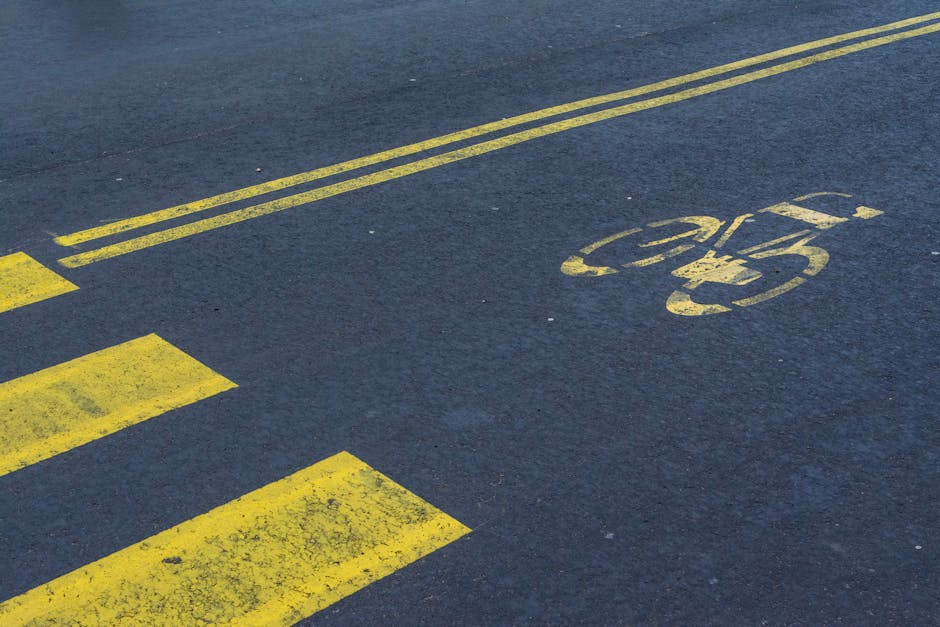Stay Safe: The Importance of Bike Hand Signals
Bicycle turn signals hand movements are vital for safe cycling. They help you communicate with motorists and fellow cyclists, reducing the risk of accidents.
Quick answer:
- Left Turn: Extend your left arm straight out.
- Right Turn: Extend your right arm straight out or your left arm up at a 90-degree angle.
- Stop: Extend your left arm out and bend it downward at a 90-degree angle with your hand open.
Learning to use bike hand signals can be a lifesaver. In 2015 alone, more than 1,000 cyclists died and nearly 467,000 were injured in accidents. Many of these crashes happened due to misunderstandings between cyclists and motorists. Using signals improves safety on the road for everyone.
By learning the basic hand signals, you can prevent misunderstandings that lead to crashes. Whether you’re turning, stopping, or slowing down, clear communication helps you stay safe. You’ll also benefit when riding in groups, as signals let others know your intentions.
Let’s explore why these hand signals are essential and how you can master them to enjoy a safer ride.

Why Are Bike Hand Signals Important?
Bike hand signals are crucial for reducing the risk of accidents. They help you communicate your intentions to motorists and other cyclists, making the road safer for everyone.
Reduce Risk
In 2015, over 1,000 bicyclists died, and nearly 467,000 were injured in crashes. Many of these accidents happened because of misunderstandings between cyclists and motorists. Using bike hand signals can reduce these risks by making your actions predictable.
Alert Others
When you signal, you alert drivers and other cyclists around you. This helps them understand what you are about to do, whether it’s turning, stopping, or slowing down. Clear communication is key to avoiding collisions.
Prevent Crashes
Misunderstandings lead to crashes. By using hand signals, you can prevent many of these accidents. Signaling your intentions gives others on the road time to react, making the environment safer for everyone.
Group Riding Safety
If you ride in a group, hand signals are even more important. They help you communicate with fellow cyclists, letting them know when you plan to turn, stop, or slow down. This is vital for preventing pile-ups and ensuring a smooth ride for the entire group.

By understanding and using these signals, you can make your cycling experience safer and more enjoyable. Let’s move on to the essential bike hand signals you need to know.
The Essential Bike Hand Signals
Left Turn
To signal a left turn, extend your left arm straight out to the side. Do this about 100 feet before you turn. This gives everyone around you enough time to understand your intention. While signaling, try to make eye contact with drivers or other cyclists to ensure they see you.
Right Turn
There are two ways to signal a right turn:
- Extend your right arm straight out to the side.
- If state laws prohibit this, extend your left arm out and turn it up at a 90-degree angle.
Just like with the left turn, make the signal 100 feet before turning and hold it for about three seconds.
Stop
To signal that you’re stopping, extend your left arm down at a 90-degree angle with your hand open. This is crucial because bicycles don’t have brake lights. This signal lets everyone know that you are coming to a halt.
Slow Down
When you need to slow down, hold your left arm behind you with your palm facing down. Move your hand up and down at the wrist. This motion signals to others that you are reducing your speed.
Give Way
To signal that someone should go ahead, fan your hand forward. This is useful when you want to let other cyclists or motorists pass.
Road Hazard/Pothole
If you see a road hazard like a pothole, point to the floor with your arm extended. You can also make a circling motion to emphasize the hazard. This warns others to be cautious.
By using these essential bicycle turn signals hand gestures, you can communicate clearly and make the road safer for everyone.

How to Use Bike Hand Signals Safely
Using bike hand signals correctly can make a huge difference in keeping you and others safe on the road. Here are some tips to ensure you’re signaling effectively and safely:
Look Back
Before making any signal, always take a quick look over your shoulder. This helps you assess if it’s safe to make your turn, lane change, or stop. It also alerts drivers and other cyclists that you’re about to make a move.
Eye Contact
Whenever possible, make eye contact with drivers and other cyclists. This ensures that they have seen your signal and understand your intention. Eye contact can be a powerful tool in preventing accidents.
Signal 100 Feet Before
Start signaling at least 100 feet before you make your turn or stop. This gives everyone around you enough time to react and adapt their speed and position if necessary.
Hold for 3 Seconds
Hold your signal for 2-3 seconds to make sure everyone has enough time to see it. A quick flash of a signal might go unnoticed, so holding it for a few seconds is crucial.
By following these simple steps, you can make sure your bicycle turn signals hand gestures are clear and effective. This will help keep the roads safer for everyone.

Frequently Asked Questions about Bicycle Turn Signals Hand
What hand do you use for bike signals?
For most bike signals, you’ll use your left arm. This is because it’s more visible to drivers who are typically on your left side when you’re riding on the right side of the road.
What is the hand signal for a right turn on a bicycle?
There are two main ways to signal a right turn:
-
Right Arm Extended: Extend your right arm straight out to the right. This is the most intuitive and widely understood signal.
-
Left Arm Up at 90 Degrees: Extend your left arm and bend it upward at a 90-degree angle. This is the classic signal, especially useful in heavy traffic where extending your right arm might not be as visible.
How do bicyclists signal when making turns?
For left turns, extend your left arm straight out to the left. This clearly indicates your intention to turn left.
For right turns, you have two options:
- Extend your right arm straight out to the right.
- Or, extend your left arm up at a 90-degree angle.
Each of these signals helps drivers and other cyclists understand your intentions, making the road safer for everyone.
For more detailed information on bike hand signals, check out our guide on bike safety.
In the next section, we’ll discuss the importance of practicing these signals regularly to ensure you’re always prepared on the road.
Conclusion
Bike hand signals are more than just a formality; they are essential for your safety and the safety of others on the road. By clearly communicating your intentions, you can significantly reduce the risk of accidents and misunderstandings.
Hand signals help both drivers and fellow cyclists understand what you plan to do next. This is crucial in preventing crashes and ensuring a smooth flow of traffic. Signaling about 100 feet before you turn or stop gives everyone enough time to react.
Safety should always be your top priority. Regularly practicing these signals can make them second nature, so you can focus more on the road and less on remembering the signals.
At Doot Scoot, we are passionate about promoting safe and sustainable urban transport. Whether you’re new to cycling or an experienced rider, our in-depth guides and expert reviews aim to keep you informed and safe.
For more tips and information on safe biking practices, visit our Doot Scoot website.
Stay safe and happy riding!










